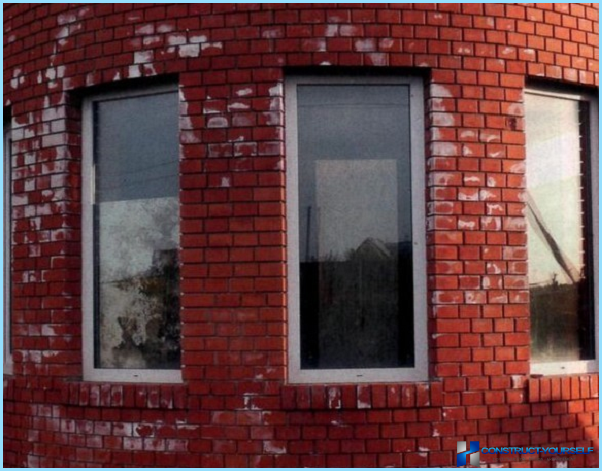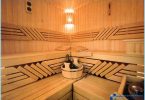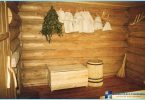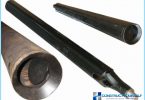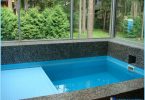The contents
White stains, residue of salt, vykristallizovyvalas of water contained in the bricks and concrete solution is efflorescence. The bricks readily absorb water, which then moves through the capillaries, together with salts dissolved in it, after that remove salt is very difficult. In conditions of high humidity, in contact with rain water bricks collect water, which at the onset of dry weather is moving to the surface and evaporates, leaving deposits on the wall.
Efflorescence must be removed, they accelerate the destruction of the walls, causing micro cracks inside the masonry. With time they increased, formed cavities, which can lead to the destruction of the wall.
Causes of efflorescence ↑
Before removing efflorescence, you need to find out why they were formed, and, if possible, to eliminate their causes.
Reasons for the formation of efflorescence on the wall:
- a large amount of salt in the mortar and the bricks;
- the ingress of salt from the ground water through the Foundation, with the lack of waterproofing of foundations or the lack of drainage and high groundwater table;
- contact with the walls of rain water with a high salt content. This can be in areas near chemical plants or in the coastal settlements.
Compliance with the rules of construction technologies in the construction of the house will help prevent and remove the conditions of formation of efflorescence. And if the construction is finished, and efflorescence suddenly spoke on the new walls have to take care of how to remove them.
As in any business, in order to remove efflorescence, you can use the services of specialists. They will conduct a chemical analysis will determine the composition of salts in the efflorescence and will select the most appropriate tool to remove them. This option may not be available always, for financial or other reasons. In this case, it will be quite capable of clean up efflorescence with their hands. And to facilitate to itself work, you first need to read reviews about how to remove efflorescence on brick.
Efflorescence is easier to prevent than to remove them later ↑
If you are planning to begin construction of a home or other facility, it is useful to observe the following rules:
- To clean and protect the bricks from falling rain and snow during storage;
- In the construction process, be sure to take care of high-quality waterproofing of the Foundation;
- Try not to leave the walls to spend the winter without a roof;
- Don’t do the bricklaying in the rain, try to remove the protective film from rain and snow already lined the wall;
- Do not overdo it with the addition of accelerators, antifreezing funds, their number should not exceed recommended norms;
- Do not soak before laying the bricks in water, do not use too liquid, try to quickly remove the solution trapped on the front wall;
- After drying, treat the masonry brick wall to protect from moisture special water repellent.
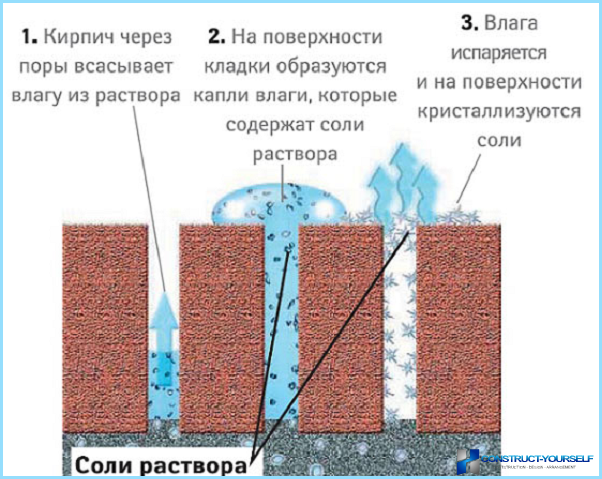
Before deciding how to remove efflorescence, it will be useful to obtain information about their chemical nature and properties of the salts that compose them. Efflorescence may form as a soluble salt and insoluble.
Chemical nature of efflorescence ↑
To include the soluble chlorides and sulfates, and salts of potassium and sodium. Are poorly soluble carbonates, except sodium and potassium, phosphates of calcium, aluminum, iron, barium sulfate, calcium silicate.
Salt, soluble in water, can be removed with plain water with minimal effort. Often efflorescence formed insoluble compounds, and to remove them, you will have to use special chemical cleaners.
Since we don’t know what the salt ruined the beauty of our walls, but chemical analysis is not included in our plans will have to proceed by elimination. Fortunately, in building supermarkets now you can easily acquire the means for removal of efflorescence on the brick. For the sample it is better to purchase a few options in the smallest packaging, suitable for dissolving various salts, after consultation with the seller. Then apply to individual sections of the wall, pre-read the instructions for use.
The order of processing of the walls ↑
Usually you use a cleaner difficulties arise. Before starting, it must be diluted with water according to the manufacturer’s instructions, then apply on the problematic areas of the wall (you can use a brush or roller), for 30min is kept on the surface and wash away with water, preferably under pressure.
Then inspect the treated areas and determine which cleaner allows you to better remove the plaque. Calculate the necessary quantity to clean efflorescence on the whole affected surface. When working with the efflorescence cleaner be sure to wear goggles and rubber gloves if product gets on unprotected skin, immediately rinse with clean water to avoid chemical burns.
To secure the result necessary to treat the wall with a special impregnation (water repellent), to remove the basis for the re-formation of efflorescence. This should be done as soon as dry cleaned brickwork, (and even better – once dry cement mortar soupstrainer home, not to spend money and effort to combat efflorescence).
For removing efflorescence ↑
Best option considered silicone water repellents. After treatment with these compounds on the surface of the wall forms a protective silicone film which does not allow liquid to penetrate inside the masonry. However, the advantage of silicone water repellents is that they do not impede gas exchange and allow the walls to breathe. This treatment reduces the pollution of the facade, allows you to remove the conditions for the spread of fungus and mould on the walls.
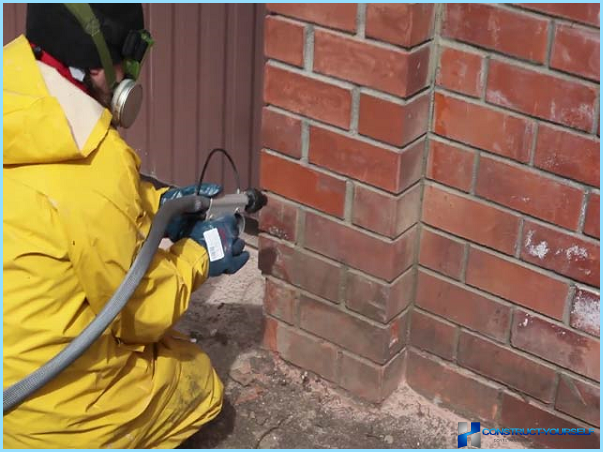
The producers promise after treatment with water repellent protection against efflorescence for up to 10 years. Repeat the application of water repellents is necessary if the wall was wet after being hit by rain drops. Perhaps it will need 5-6 years after the first application.
The surface is processed until the termination of absorption, then apply the re layer will not succeed, because the liquid will slide down the wall, not sticking and not being absorbed.
The repellent before applying, dilute with water to desired concentration by following the instructions. To remove the re-plaque, increasing the concentration, you should not. You will get the opposite effect, the protective properties of water repellent will decrease. This is due to the physico-chemical characteristics of the molecular structure of this substance.
How to clean efflorescence from bricks ↑
Poor solubility in water and alkaline-based drying are many tiny crystals growing from the components of the solution. The most beautiful facing brick with a fiery red tint and a high content of iron oxide may have a large number of impurities sulfate salts of calcium and magnesium.
Among the many tips on what to clean the efflorescence on brick, the most common of this kind:
- Treating with acetic acid, thereby to obtain a soluble plaque, well washed with water.
- Mechanically, using detergents, brushes and a large amount of demineralized water;
- Weak solutions of phosphoric acid;
- Supercreature brand production for removal of efflorescence, including with the use of Trilon-of chelaton III.
The efficacy of the connections is not in doubt, is an industrial tool to remove insoluble salts from steam boilers and thermal generating plants. Trilon very quickly turns hard insoluble deposits in soluble salt, 10-15 minutes after the treatment is washed off with very hot water.
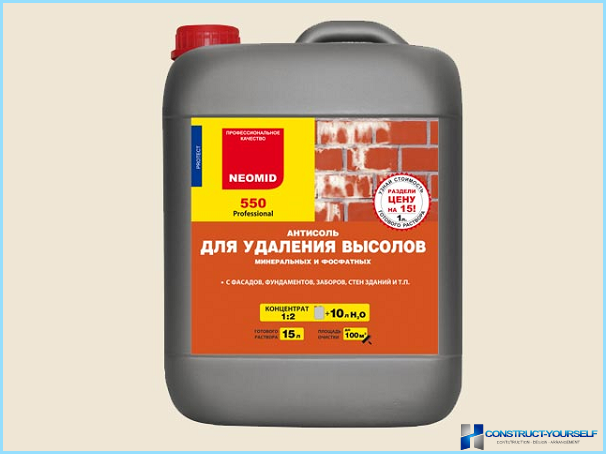
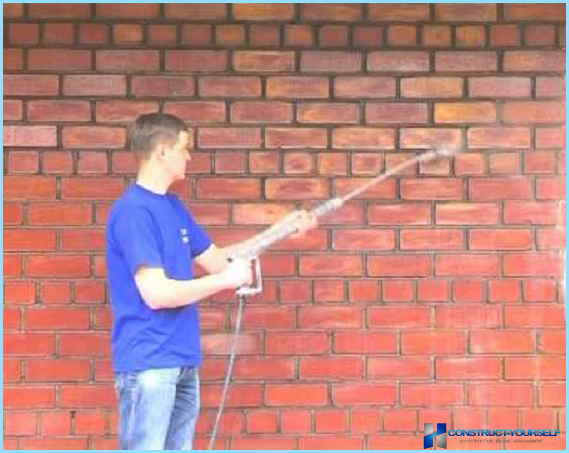
The trick is working with facing bricks requires high accuracy in order to remove efflorescence and to avoid leaching of the dye components, as a result, not to obtain, instead of a uniform beautiful walls with efflorescence spotted the multi-colored structure resembling a scrim.
The only recommended way to clean the efflorescence on brick and concrete – the use of specialized tools by type « Penta-Junior».

